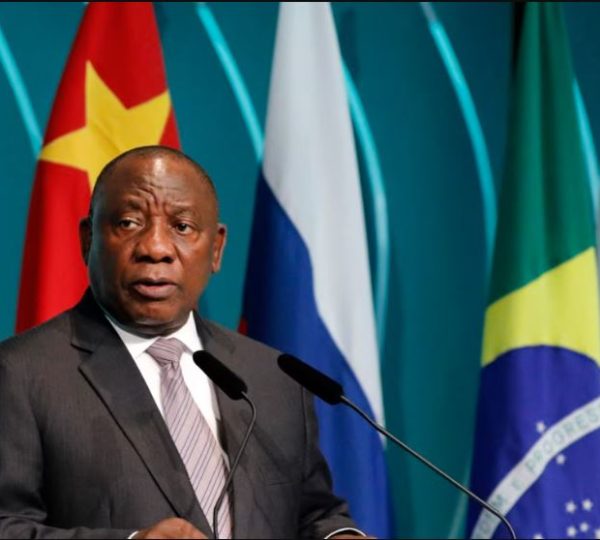BRICS: Prospects for Cross-Border Payments in Africa?

The BRICS bloc—comprising Brazil, Russia, India, China, and South Africa—has gained attention not only for its recent expansion but also for its ambitious proposals. Among them is the potential development of a common currency or an alternative to the US dollar, signalling a shift in global economic dynamics. For Africa, these developments hold transformative potential, particularly in the areas of cross-border payments and intra-continental trade.

Let’s explore how BRICS initiatives, when aligned with African frameworks like the African Continental Free Trade Area (AfCFTA) and the Pan-African Payment and Settlement System (PAPSS), could unlock unprecedented opportunities for financial autonomy and economic integration across the continent.
Reducing Currency Volatility and Transaction Costs
One of the primary hurdles for African businesses engaged in cross-border trade is the reliance on foreign currencies, particularly the US dollar. This dependency creates exposure to currency fluctuations, which can lead to significant financial risks and unpredictability. Moreover, the cost of cross-border transactions in Africa remains prohibitively high.
- The Cost Factor: Cross-border transaction fees in Africa average 8%, according to a 2022 World Bank report—far above the global average. These costs disproportionately impact small and medium enterprises (SMEs), which are the backbone of African economies.
- The Role of BRICS: A BRICS-backed currency or payment system could lower transaction fees by eliminating the need for currency conversions and reducing reliance on third-party financial intermediaries. For example, African exporters could conduct transactions with BRICS nations using a single streamlined currency, minimizing costs and improving profit margins.
By reducing these barriers, African businesses would not only save billions but also become more competitive in global markets.
Boosting Inter-Regional Trade Under AfCFTA
The African Continental Free Trade Area (AfCFTA) represents a transformative vision for Africa’s economic future. By creating the world’s largest free trade area, it aims to increase intra-Africa trade by 52.3% by 2025 (UNECA). However, one of the biggest challenges is the fragmentation of payment systems across the continent.
- Current Challenges: African traders often face delays of several days for cross-border payments due to intermediaries, and the use of foreign currencies adds another layer of complexity. This slows down trade and deters the formation of stronger inter-regional partnerships.
- The PAPSS Solution: The Pan-African Payment and Settlement System (PAPSS) is a homegrown initiative designed to address these issues. By enabling real-time payments in local currencies, PAPSS eliminates the need for costly conversions and intermediaries. If adopted widely, it could revolutionize how African businesses interact with one another.
- BRICS Alignment: A BRICS-led payment framework could complement PAPSS by offering a globally accepted system that facilitates not only intra-African trade but also trade between Africa and BRICS nations. This alignment would bring AfCFTA’s vision of seamless trade closer to reality.
Strengthening Africa’s Financial Autonomy
Africa’s overreliance on foreign currencies has long been a point of contention. The inclusion of countries like Saudi Arabia and the UAE into BRICS underscores the bloc’s growing influence in shaping a multipolar economic order. For Africa, this presents an opportunity to reduce financial dependency on Western systems.
- Global Power Shift: BRICS countries represent 42% of the world’s population and contribute over 30% of global GDP. Aligning with such a bloc positions Africa to benefit from a more balanced global trade system.
- Financial Independence: The ability to settle payments in an alternative currency reduces exposure to external shocks, such as fluctuations in the value of the dollar or euro. This stability would not only protect African economies from external crises but also encourage foreign direct investment by reducing perceived risks.
A strengthened financial autonomy would empower African governments to focus on long-term development goals without being constrained by global monetary policies.
A Catalyst for New Trade Partnerships
Africa’s trade with BRICS nations is already on an upward trajectory, with China leading the way. In 2021, China-Africa trade reached a record $254 billion. Expanding this model to other BRICS nations—such as India and Brazil—could unlock new markets for African products and foster economic diversification.
- Diversified Opportunities: While commodities like oil and minerals dominate Africa’s trade portfolio, stronger ties with BRICS could encourage the export of value-added products, fostering industrialization across the continent.
- Support for SMEs: With the majority of African enterprises being SMEs, access to simplified and affordable payment systems would lower barriers to entry into global markets. This could catalyze the participation of smaller businesses in international trade.
By fostering these new partnerships, Africa could achieve more inclusive economic growth, aligning with the sustainable development goals of AfCFTA.
As BRICS initiatives evolve, their potential to complement Africa’s existing frameworks like AfCFTA and PAPSS cannot be overstated. Together, these efforts could usher in a new era of financial inclusion, trade efficiency, and economic independence for the continent.
To explore this topic further and gain actionable insights, our recently published report, “Digital Infrastructure for Cross-Border Payments”, dives into case studies, emerging solutions, and successful regional collaborations. The report outlines a clear path toward a more connected African continent where cross-border payments drive prosperity and inclusivity.
📥 Click here to download the full report
Ready to invent the future?
Our teams possess extensive in-market experience that drives measurable growth for brands. Please reach out to us to learn more.
